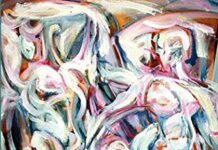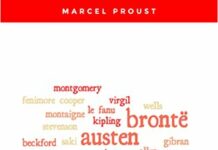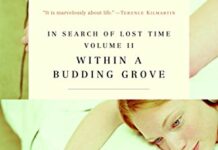
Ebook Info
- Published: 2022
- Number of pages: 392 pages
- Format: EPUB
- File Size: 0.36 MB
- Authors: Marcel Proust
Description
The final volume of In Search of Lost Time chronicles the years of World War I, when, as M. de Charlus reflects on a moonlit walk, Paris threatens to become another Pompeii. Years later, after the war’s end, Proust’s narrator returns to Paris, where Mme. Verdurin has become the Princesse de Guermantes. He reflects on time, reality, jealousy, artistic creation, and the raw material for literature-his past life. This volume also includes the indispensable Guide to Proust, an index to all six volumes of the novel.
User’s Reviews
Reviews from Amazon users which were colected at the time this book was published on the website:
⭐Four decades ago, I first read the subject quote in Simone de Beauvoir’s seminal work,
⭐. She properly credits Marcel Proust with the quote, stating that it is with “great accuracy.” ‘Lo these several decades later, I finally read the quote in Proust’s work, which is this final volume of “In Search of Lost Time,” entitled “Time Regained.”There are long (naturally!) passages, with his signature subordinate clause after subordinate clause which ruminate on aging and the fleetness of time. The numerous characters from his intense portrait of a sliver of French salon society have both aged, physically and mentally, yet have also retain key aspects of their more youthful being. As Proust said: “Some women no doubt were still easily recognizable: their faces had remained almost the same and they had merely, out of propriety and in harmony with the season, put on the grey hair which was their autumn attire.” Some have stopped aging, the “alternative,” as the quip has it: Albertine, who had first caught the narrator’s eye, frolicking on the beach at Balbec, died in the previous volume, and Robert St. Loup is killed in this volume, as a French Army officer, in “the Great War,” as it was once called. Proust raises the question: Did he want to get himself killed due to an unhappy domestic situation?1914. That watershed year that denotes the end of what Barbara Tuckman called
⭐, of which Proust’s salon society was a cornerstone. Hopefully a “Proust scholar” will correct me if I am wrong, since “google” made no mention of it, but I believe it is that date, in this volume, which is the first time a particular date is given. And I struggled in previous volumes trying to guess the year, confused at times by the juxtaposition of the Dreyfus Affair and airplanes. Time, previously “lost,” and now in this volume, suddenly “regained.” One of several possible meanings, I am sure. I’ve read these volumes in the “Modern Library” version, in paperback, but if I had read it on my Kindle, I could readily determine how many times Proust mentioned “1914.” It must have been five or six. In general, the war is still at a distance, with the principal impact being the lack of men in the Guermantes salons, and debates on how a society woman should now dress: austerely, or flashy, for the “morale of the men”? Proust does describe the impact of the bombing raids on Paris, conducted by Zeppelins and Gothas. And during the war the pleasures (and pain) of the flesh must not be forgotten. Proust depicts a house of assignation in which the pro-German M. de Charles takes delight in being chained to a bed and whipped. Shades of
⭐. And there is even the strong inference that his favorite target are 10-year old boys. Perversions to complement the ultimate perversion of war itself.There are equally long passages on the importance of literature, and how essential it is for the reader to develop an empathy for the other. Of the various works mentioned, he highlights the works of one of my favorite French writers, George Sand, and in particular
⭐which he particularly admires. So much so, that it will be the next book in French that I read. Proust reflects on his own mortality, and would there be enough time left to finish his magnum opus? He would die at the age of 51, still far too young, in 1922, with this work unfinished.Proust is justifiable famous for giving the world the metaphor of the madeleine dipped in tea, bringing back a rush of memories. So too with “the bell” above the backyard gate, which was rung during my visit to his home in Illiers-Combray in 1989. The following is a closing passage: “When the bell of the garden gate had pealed, I already existed and from that moment onwards, for me still to be able to hear that peal, there must have been no break in continuity, no single second at which I had ceased or rested from existing, from thinking, from being conscious of myself, since that moment from long ago still adhered to me and I could still find it again, could retrace my steps to it, merely by descending to a greater depth within myself.”Alas, I heard the peal of the bell of his youth. It would subsequently be stolen, now the exclusive preserve of a “collector” who wanted to “corner” Time, the last word in the book.“Regained.” Hopefully that is the operative word, and all that lost time at the Ile de France recovered, and intensely enjoyed even though the attire is now autumnal. Of the various fantasies to be fulfilled, one would be the granting of enough of that ever-so-elusive Time to read Proust’s magnum opus as it was written, in French. 5-stars, plus.
⭐[NOTE: Amazon has been mixing up Proust reviews, pairing the wrong reviews with the wrong books.I’ve included screenshots of the exact item I’m reviewing.]”Finding Time Again” (also known as “Time Regained”) is the seventh and final volume of Proust’s “In Search Of Lost Time.” “Finding Time Again,” like volumes 5 and 6, was only in draft form when Proust died in 1922. The book’s completion and publication were handled by Proust’s brother Robert.”Finding Time Again” as completed by his brother was published in 1927. Subsequent French publications occurred in 1954 and 1988 which inserted several corrections, additions, and possible intentions.”Finding Time Again” is part of Penguin’s new English translation published in England in 2002, only the second English translation since the Moncrief translation. Moncrief actually died before he could finish translating volume 7; his work was completed by Stephen Hudson and published in 1931.The Penguin edition has the important advantage of having access to all the new research performed since the original book first came out. Penguin’s translator for volume 7 was Ian Patterson; the translation uses modern English, and the notoriously long sentences are heavily punctuated, making them easier to follow. The Notes and Synopsis in back of the book are very valuable reader aides.The cover says “Volume 6” but it is actually volume 7 of Proust because Penguin published volumes 5 & 6 together in one volume.As of this date, the American edition of Penguin’s “Finding Time Again” had yet to be released. After reading the American versions of volumes 1-4, I switched to the British versions for volumes 5, 6, and 7. Except for differences in punctuation, and presenting French quotes in the original French rather than English (the English is given in the Notes), the British and American editions are essentially the same. The casual reader will lose nothing between the two.I personally found Volume 7 probably the weirdest of the entire series. In fact, it’s almost like pulp fiction.”Finding Time Again” can be summarized like this:- pp 1 – 70: The Narrator and Gilberte. We finally learn who was walking with Gilberte the night when the Narrator was on his way to reconcile with her (Vol 2: “In the Shadow of Young Girls in Flower”).- pp 71 – 117: The Narrator and Charlus. The story jumps to 1916 when the Narrator returns to Paris after spending years in a sanatorium. Out for a walk, the Narrator meets Charlus who launches into a long monologue about the war, Morel, and Brichot.- pp 118 – 144: Jupien’s gay/sado-masochism parlor- pp 145 – 162: Paris gets ready for peace; the fates of Saint-Cloud, Morel, and Charlus.- pp 162 – 172: The story jumps forward again, this time by several years when the Narrator is once again back in Paris after several more years in a sanatorium. The Narrator has another encounter with Charlus who has aged greatly and appears to have suffered a stroke.- pp 173 – 342: The afternoon party. The Narrator has been living alone, refusing to partake of society. But the invitations keep coming, so he decides to make an exception and attend an afternoon concert/party at the home of the Princesse de Guermantes, where he is shocked by how old all his friends have become. The Narrator has his second “madeleine” moment (actually several of them) which inspire him to start his long-delayed book.- pp 342 – 358/end: The Narrator laments the years lost in a life of idleness, and now fears he may not live long enough to finish his book.The EndThat’s it in a nutshell.Two themes in volume 7 stood out for me:- Gay people are really sick perverts.- Getting old really sucks.I’m not kidding; that’s what this book is about. You will not find a single reddeming statement about gay people or old people. Along with vol 4, “Sodom and Gomorrah,” and similar passages, it is surprising that “In Search Of Lost Time” is still considered a masterpiece by the literary elite considering how politically incorrect it must be to a 21st century reader.If you like titillating stories of the sexually depraved and gross-out descriptions of the old and feeble, this is your book. Proust goes to great detail about the happenings in Jupien’s gay parlor, and describes in disgusting detail what he really thinks about getting old.Five stars for an entertaining finale, the user-friendly modern-English translation, the handy Notes and Synopsis, and the good construction of the physical book. The entire book is 374 pages, not 720 pages as stated in Amazon.
⭐When I first begin reading, “In Search of Lost Time,” I had planned to read it throughout 2015. I now find myself halfway through 2016, but I have – eventually – finished this enormous work. I can say that, rather than get to the last page with relief, I actually feel a great sense of loss. Proust has become my companion and to think I will not be in his company during any part of the day almost makes me want to go back to the beginning and begin again!This last volume has, “Time Regained,” and also, “A Guide to Proust,” which is more an alphabetical index of characters, people, places and themes. If, as a reader, you do make it this far and get to the end of this great work, you will realise that ‘what’ happens is less important than in most novels. There are whole volumes which seem to revolve around a never ending dinner party and, as such, you need to put away your previous thoughts of what a novel should do and just relax into Proust’s words. Allow him to guide you and you will be rewarded with one of the great reading experiences of your life.There are certain themes which run through the novels and the Narrator always tries to bring these into play. For example, he begins this last volume walking with Gilberte near Combray; where the very first novel began. During this last book he realises the Meseglise way and the Guermantes way are linked, while Gilberte also informs him that she was attracted to him a child. Immediately, we are thrown back into those early days as a child and all of those childish uncertainties and concerns. Later, our Narrator returns to Paris. It is now 1916 and so we have muses on WWI. Old characters appear, including Saint-Loup, Gilberte of course, Charlus, Jupien, Legrandin, Mme Verdurin and others. The past and present seem to collide at a party in the Guermantes house, but it is obvious that the war has both changed society and the behaviour of those people, and places, he once knew.The role of memory is certainly central to this novel, but I would simply suggest that, if you have never read this before, begin at the first novel and embark on one of the greatest works of literature you will ever read. It is unlike anything else I have read – which, in itself, is enough to recommend it.
⭐But for the Great War, ‘Time Regained’ (‘Finding Time Again’) would have been preceded by only two parts, ‘Swann’s Way’ and ‘The Guermantes Way’. In this last part, owing to changes in society, the two ways—in their metaphorical sense—have met. But then they had never been irreconcilable, as the narrator learns from his old friend Gilberte de Saint-Loup on revisiting them with her. They had even been united, in the person of the Guermantes’s friend Charles Swann.When the three-part novel was superseded, the balanced design was lost, but much was gained—notably, in the intervening parts, the story of the narrator’s mistress, Albertine, and the development of the character of the Baron de Charlus. And in ‘Time Regained’ as we have it now, not only is Charlus’s portrait completed, the War becomes at once the background and the subject. The long war chapter, too—what distinguishes this last volume from its predecessors, mostly meditative or reflective—, was written as it was lived. And on the other hand, in both the outer chapters the reflective quality is enhanced by their having mostly retrospects for subject-matter.Already on his return to Tansonville to see Gilberte, his first love, the narrator has found his heart changed even more than her face. Though staying on now at her husband’s insistence, he is struck by the change in Robert and in their friendship. And though he has Gilberte recall Albertine for him, he does so with indifference. In the third and final chapter it’s to Paris that he has returned, after the War, and, as in the second chapter, after long years in a sanatorium. Proust did spend six weeks in a sanatorium after his mother died, and if Thomas Mann could set a whole novel in one so could he have done. Yet although Marcel has related his life exhaustively until now, he says nothing about all his sanatorium years except that the treatment consisted in isolation. Evidently this is some such device as that which introduced ‘Swann in Love’.Of course, there is a clue in that word ‘isolation’, and another in the author’s remark that it was ‘a long time since [he had] seen any of the personages mentioned in this work’. So far as Proust had, himself, withdrawn from the world, it was less for the sake of his health than for that of his novel, but this was the story of a writer’s formation, not of his working life. As he expanded and developed that great set piece which is the final Guermantes party, Proust must have thought how striking it would be for the characters he was now bringing back together for the last time, following a tradition with novelists, to reappear changed almost out of recognition. But this could only be contrived by a not very artistic stretching of time’s thread.On his way to the party, through the streets along which his old nurse Françoise used to take him to the Champs Élysées, Marcel had felt he was gliding through the past. In the courtyard of the Guermantes mansion he had gloomily reminded himself that the joys of the mind weren’t for him, incapable as he was (or felt he was) of any serious literary work. But it was just when he had resigned himself to the frivolous pleasure of the party that he had stumbled against an uneven flagstone and been overwhelmed by a mysterious happiness. And upstairs in the Prince’s library, before joining the party, he has finally solved the riddle of that happiness, with the revelation of Time Regained.A vast set of variations on the theme of time past is offered by the party itself. Having failed to recognize, at first, one after another of his old acquaintances, he realizes that time here is visible—and so fails at first to recognize the former Mme Swann, because she has not changed, though for the same reason she seems hardly alive. As for the stout lady who declared “You took me for Mama”, she did indeed look more like Mme Swann than like the Gilberte of their ‘colloques sentimentales’ at Tansonville.But there are also guests he doesn’t recognize because he doesn’t know them, guests who have penetrated into this fashionable gathering because time has been at work on society too. Its action is measurable not only by people’s physical transformations but by their movements up or down the social scale. Even the Duchess de Guermantes’s stock has gone down, because she has taken to frequenting actresses and to reading! And in his scandalous old age her brother-in-law, M. de Charlus, is quite isolated. Does Proust’s account, in ‘Paris during the War’, of ‘the pleasures of M. de Charlus’ throw light on an element in his own psychology? If you accept the biographical hints of sadistic desires on his part, and wish to think that the goings-on in Jupien’s male brothel were experiences of his own, you will need to believe that as well as wanting his character to represent him, he wanted his readers to be misled, and this is why he made the Baron a masochist. Anyhow, the narrator can now contemplate, in the Faubourg Saint-Germain, radical change exactly where it had seemed impossible.More than one guest whom he and we used to know and have lost sight of is actually glad to greet him here for old times’ sake, and although this is fiction indeed, we want to believe in such people. They are like real people in this, that the memories he and they are exchanging interest them only as relating to themselves. And if Marcel is bored with them, whereas they—these speaking portraits—are the proof of the interest Proust took in their originals, Marcel is like Proust, and unlike them, in not egotizing. In fact the narrator who now finds the minutes he has to spend in Madame de Forcheville’s company interminable, who has no intention of talking literature with Gilberte or with the Duchesse de Guermantes, and who means to resume a solitary life the very next day,—this narrator is indistinguishable from the author. ‘Wasn’t it in order to concern myself with them that I was going to live apart from them?’Actually, he is only pleased when Gilberte presents her daughter to him, and his pleasure then is poignant. The two great ‘ways’, connecting so many people and places in his life, have both led to her, Swann’s granddaughter, in whom he sees her father—who had been his closest friend—, and time materialized. ‘Smiling, full of hope still, formed from the very years I had lost, she was like my own youth.’After he has observed the Duc de Guermantes, at the end, tottering on the stilts of his eighty-three years, it is as ‘occupying a place in the dimension of time’ that Marcel means to describe people in the book he is at last resolved to write. Before his meditating was done and he joined his fellow guests, he had realized that he had all the materials for a work of literature in his past life. And these materials are already changed almost out of recognition. So it’s in the full consciousness of time’s power that he feels the joy of his new-found assurance: the work time threatens is the means of conquering it.To accept Proust’s theory of Time Regained, it isn’t enough to believe there is a transcendent reality, you must believe there is a transcendent reality other than that of the mystics. But you may think it enough to recognize here a full and final statement, not of a philosophy of time, but of the unifying theme, now orchestrated more sumptuously than ever, of the whole novel. And if you have discovered no ‘grand general plan’, still from here you can see the whole in its true perspective, that is, from the same point as the author—the only point from which, every part throwing light on another, you can at length make sense of it all.‘Is art more real than life?’ the narrator had asked himself earlier, and now (adapting what Baudelaire said about poetry) he answers definitively: ‘Art is what is most real’. No doubt Proust ascribed a superior reality to Art by way of affirming Art’s supreme value for him. On finishing his novel, his readers today may feel they value his art as being, not indeed more real than life, but—by its way of ‘reconstituting’ life as only great art can do—life-enhancing, and as showing, if not that life has a meaning in itself, at least that it can be given one.(Full review on reviewer’s website. And see
⭐In Search of Lost Time [volumes 1 to 7
⭐].)
⭐Having finished Proust’s sprawling masterpiece, I wonder if, after and interval, I should read it again, for I did not fully master the diverse contents. Perhaps! But I certainly appreciated the final volume which contains much brilliant writing, and an ending which brings all things together. Of course, Proust planned the final book initially. What an intriguing man!
⭐Final volume of a masterwork. A real joy to have consumed this work.
⭐”A Guide to Proust” doesn’t seem to be part of the Kindle version!
Keywords
Free Download Time Regained in EPUB format
Time Regained EPUB Free Download
Download Time Regained 2022 EPUB Free
Time Regained 2022 EPUB Free Download
Download Time Regained EPUB
Free Download Ebook Time Regained



